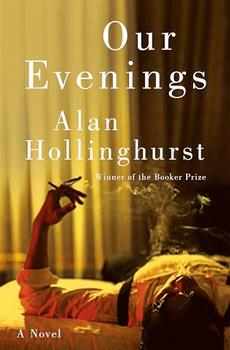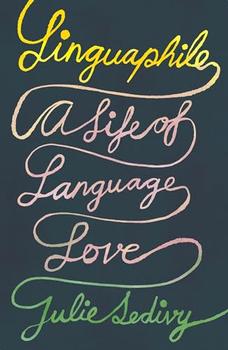Write your own review!
Gabrielle Renoir-Large
A Comfy Book That Harkens Back to the Classics
I bought Diane Setterfield’s bestseller, “The Thirteenth Tale” on impulse, when I saw it lying on a bargain table in the grocery store. I usually avoid bestsellers. Hype steers me away from books more often that it steers me towards them, and I just didn’t think the writing would be the kind of writing I’d like. However, the promise of a “Gothic” tale was encouraging, and I did love the cover art.
In “The Thirteenth Tale,” author Vida Winter has a story to tell, and she chooses the very unlikely person of Margaret Lea to tell it to.
Margaret is a young woman who seems to have no life outside of her room, the six hours she devotes to reading each night, and her work in her father’s antiquarian bookstore. She does write an occasional short biography, but she’s no Kitty Kelly. Margaret’s interest “has always been in writing biographies of the also-rans; people who lived in the shadow of fame in their own lifetime and who, since their deaths, have sunk into profound obscurity.”
Raised primarily by her book loving father rather than by her mother, Margaret, herself becomes so involved in books, letters, diaries, etc. that she won’t read unless she’s sitting down. When she was seven, she tells us she sat on a high wall to read “The Water Babies,” and “was so seduced by the descriptions of the underwater life that I unconsciously relaxed my muscles…plummeted to the ground and knocked myself out. Reading can be dangerous.”
When Margaret receives a letter out of the blue from the reclusive bestselling author, Vida Winter (“fifty-six books in fifty-six years”) asking Margaret to write Vida’s life story, a story she has told to no one, Margaret is beyond surprised. Besides the fact that Margaret lacks the necessary qualifications to write Vida Winter’s life story, Margaret, herself, has never even read one of Vida Winter’s books. (Margaret’s much more attuned to 19th century literature, instead, and especially “Jane Eyre.”) She does remember having once seen a poster of Vida Winter, and Margaret remembers the “extravagant beauty…the eyes…an inhuman green, the green of glass in a church window, or of emeralds or of boiled sweets.” She remembers thinking: this woman “does not have a soul.” (Though Setterfield never gives us even an inkling of why Margaret would feel that way.)
At first, Margaret is determined to refuse the offer to be Vida Winter’s biographer. Vida Winter is simply too famous. After all, twenty-two people more qualified than Margaret have already tried to write Vida Winter’s story and all twenty-two failed, but one night, curious and unable to sleep, she gets up to make a pot of tea, creeps down to her father’s shop and removes his copy of Vida’s debut novel, “Thirteen Tales of Change and Desperation,” a rewriting of beloved children’s fairy tales. She reads voraciously, with gloves on, so the oil from her skin does not tarnish the cover of the book. The thirteenth tale, however, is missing, and as Margaret’s father explains to her the next day, his copy is a rare one, a first edition, published before it was discovered that the capricious Vida had left the closing tale out of the book. Subsequent copies of the book were simply called “Tales of Change and Desperation,” but Vida’s fans have long wondered what the elusive thirteenth tale revolved around.
Now intrigued herself, Margaret makes the trip to Vida’s Yorkshire home. She finds the famous Vida Winter ill and weakening, but ready to tell Margaret the truth after having spun so many fanciful tales to every reporter and biographer who had the courage to set foot on her doorstep, for Vida Winter, you see, found the tales she spun more interesting than the truth.
Now, however, it’s become vitally important to Vida to tell her story – her real story – to someone. For reasons that will remain unclear until near the book’s end, Vida has chosen Margaret for a very special reason.
Vida’s story takes Margaret – and the reader – back to Angelfield. “Angelfield the village. Angelfield the house. And the Angelfield family itself.” We don’t get to know much about the village, but the house is a decrepit Yorkshire manor house, and the family, while possessing money and property, has no aristocratic titles. And for those of you looking for strange and dysfunctional families, look no further. The Angelfields have it all – adultery, incest, inbreeding, abandoned babies, out-of-wedlock births, dark, tortured secrets, mental and physical illness, violence, outright madness, and maybe even a ghost. The only people who live at Angelfield, other than the family are the elderly housekeeper, known as “the Missus” and the level-headed John Digence, better known as “John-the-dig,” the gardener, who comes from a family whose members have tended the Angelfield topiary garden for generations.
Although this is Margaret Lea’s story, Vida Winter comes to dominate the book. It’s obvious that Setterfield wanted to pay homage to the Charlotte Brontë novel, “Jane Eyre,” which plays a large part in “The Thirteenth Tale,” however, paying homage to that novel required Setterfield to concentrate on strong female characters. The men in the story are either mad or, like John-the-dig, relegated to a minor role, and even the females aren’t quite well developed enough. We very rarely get their inner thoughts. Setterfield keeps us at arm’s length, never really letting us get to know them.
Though the elements of “The Thirteenth Tale” recall the best of the classics, and though Setterfield’s a good storyteller, she’s no Brontë, not yet anyway. While she does a good job of dropping clues to the resolution of her story here and there, the plot, once we reach the end, is still filled with several gaping holes. (I don’t mean unanswered questions or things left unresolved; I mean plot holes.) And while there’s nothing really wrong with Setterfield’s prose, it’s often vague and lacks descriptive qualities that would have brought her story to life.
The switches in person from “we” to “I” are handled well, but they’re a plot device that’s very transparent, even to Margaret. The whole thing was technically "okay," but it gave the tale a false quality that it really never overcame. When we finally reach the end, we find part of the story has been built on deception. Some readers are going to love this, while others are going to shake their heads in dismay. It’s impossible to predict how any particular reader will feel.
”The Thirteenth Tale” is definitely a plot driven novel, and I don’t regret the two days I spent reading it. It was comfy, interesting, but in the end, it wasn’t at all memorable. Though Setterfield, as already mentioned, is a good storyteller, her tale felt like so many tales that have been told before, and sadly, told far better. There was no originality, no adventure, no sense of coming upon something new.
I also thought Setterfield tried too hard to give us a happy ending. In fact, she gave us three or four endings, some happy and some not. She obviously didn’t take the good advice of her writing mentors when they said “when you come to the end, stop.” Instead of stopping, Setterfield carried on. And on. And on. And after the denouement, there’s an Epilogue. More story tacked on. I think the book could have been greatly improved if Setterfield had left a little more for her readers to ponder.
In the end, “The Thirteenth Tale” is better than most debut novels, though it’s certainly not anything stellar. It’s a great book to take on a long train ride, a car ride (if you’re a passenger), a long plane trip, or just to whittle away several hours on a cold winter’s day. Though the ending can be guessed, it can’t be guessed early enough to spoil the read. And Setterfield gives us a little bonus in the character of a charming giant with the improbable name of Aurelius.
When you’re struggling for something to read that doesn’t require you to think too much, when you just want a good story that harkens back to the classics, “The Thirteenth Tale” might fill the bill quite nicely.
3/5
PamelaHD
Disappointment
I saw numerous reviews on blogs raving about this book. Unfortunately, I made the mistake of picking this book up at the library right after reading Rebecca. Not that it was a bad book, quite the contrary, but it paled in comparison. It was an ambitious novel with a number of interconnected subplots. I was totally wrapped up in the events for the first two thirds of the book. Then it was as if Ms. Setterfield couldn’t figure out how to end it. I found the wrap-up disjointed from the story preceding it. She tied up a lot of loose ends quickly with a “they all lived happily ever after” ending, some of which rang true but to me the primary explanation was stretching it. I felt like she was saying “oh, dear, this story is going on too long. I have end it. So I’ll do this.” I look forward to Ms. Setterfield’s next offering, though, since this was an excellent start for a first novel.
Kathleen
Totally predictable
I found this book to be so full of cliches that I actually laughed out loud. Talk about unoriginal: everything from the characterization of the heroine, the setting, to the way in which it referenced works like Jane Eyre, etc. I found the main character to be uninteresting and the plot was predictable. And all the nonsense about twins being like one soul really got on my nerves after a while.




